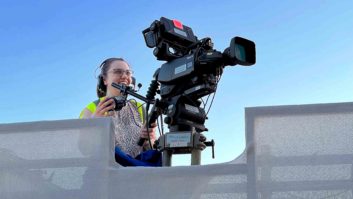Ofcom’s findings after its investigation into a recent incident at one of the UK’s major broadcaster highlights crucial elements of broadcasting today that are often overlooked, both by sections of the TV industry itself and the viewing audience in general. The release of fire suppressant gas into part of the facility not only damaged servers but also disrupted operations, in particular access services.
This disruption caused continued problems after the event, resulting in degraded services around subtitles or audio description. This brought approximately 500 complaints and an Ofcom investigation that concluded there had been a breach of licence conditions by both “falling short of the statutory requirement to subtitle 90 percent of its program hours over 2021” on the Freesat platform and “not effectively communicating with affected audiences about the availability of services in the weeks following the incident”.
The regulator has asked for a report from the broadcaster on what action is being taken to “ensure greater resilience of its access services”, in addition to improving the accessibility of broadcast and on-demand programs, by the end of this year. Ofcom has also made recommendations to all broadcasters, the most significant being that they should improve their disaster recovery (DR) plans and processes. In particular, Ofcom has stated, DR facilities must “be specified to carry access services, as well as sound and vision”, with regular tests under simulated emergency conditions.
Even though it was not specifically mentioned, the implication is clear that Ofcom is recommending the full mirroring and backup of playout facilities with complete support for both program output and features such as subtitles and audio description. All major broadcasters and playout service providers run two facilities, with one being the backup to the other in case of problems. This is a logical and sensible way of working, but the implementation of capabilities is sometimes driven by budgetary and technical constraints.
One of the options would be for two centres to play out programming and associated accessibility features simultaneously. This way, a seamless switch can be made between them if and when necessary. The technology that enables this includes servers, automation systems, scheduling software and interconnectivity and is now well-established and very solid in terms of reliability. With such a technical infrastructure, the norm should be for operators to regularly flick between their two playout centres on a regular basis to the extent that it is not obvious which is playing out at any one time. This is already common practice in virtual and cloud IT environments where platforms are seamlessly switched without impacting services.
Mediaproxy knows all about trying to emphasise the importance of an operational technology that some in the broadcast world might regard as necessary but still less than vital. But the attitude towards compliance monitoring, Mediaproxy’s core business, has certainly altered in recent years, particularly with the proliferation of channels and expansion into streaming services that has changed broadcasting significantly. The nature of compliance logging and analysis has also changed because it is no longer confined to the master control room but now has to be carried out along all points of the distribution chain.
Although we do not work directly in DR, Mediaproxy’s LogServer is capable of providing links to these systems. We would certainly like to see the same recognition of DR as a vital necessity, not merely a necessary evil, as is now the case with compliance monitoring. Ofcom’s recommendations and message to the broadcast market as a whole are to be welcomed but for significant changes to be made the warning must be heeded by everyone involved in program distribution.







